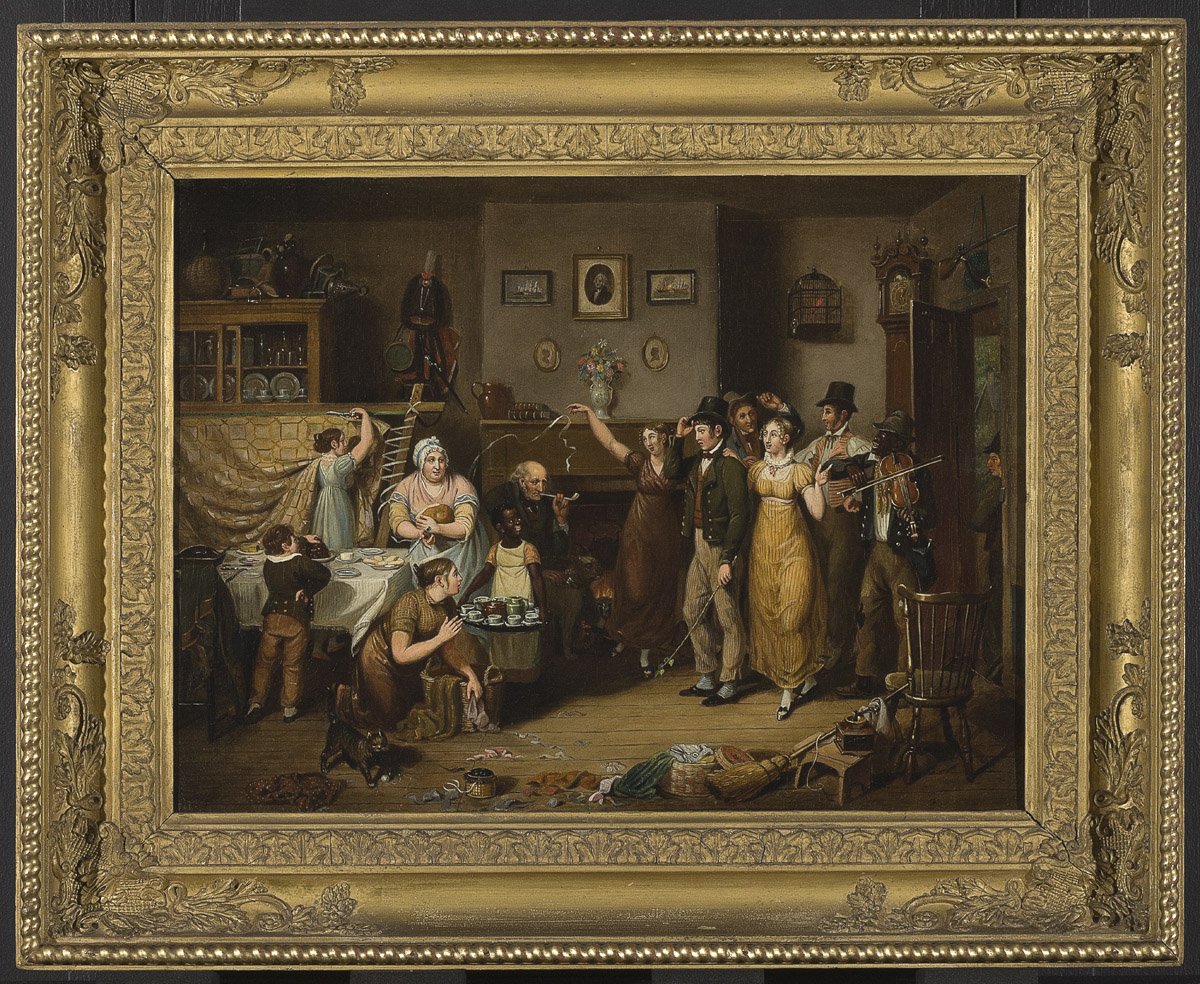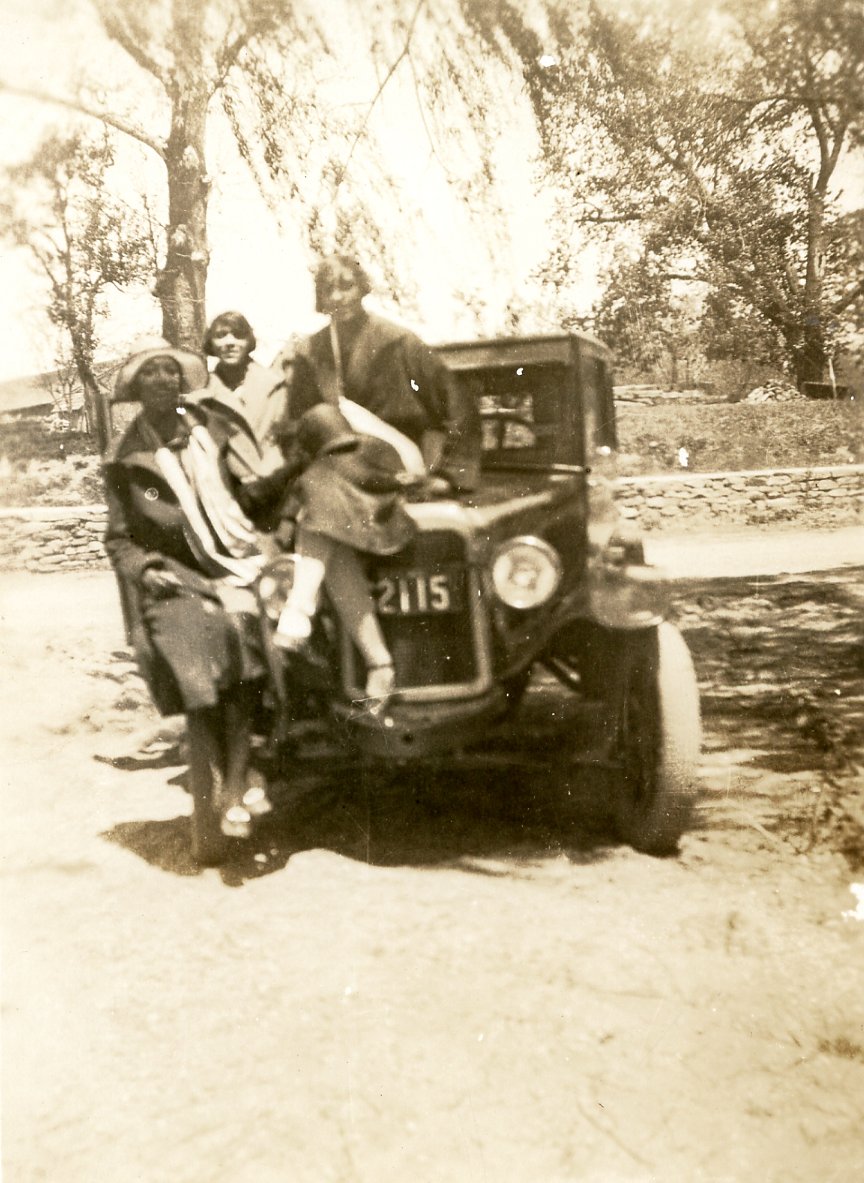Re-Presenting Black Womanhood
A famous book of poetry, an embroidered picture, an account book, and a bestselling cookbook. These objects in Re-Presenting Black Womanhood, a new online exhibition and companion gallery installation at Winterthur Museum, Garden & Library in Delaware (fig. 1), highlight the creativity, ingenuity, and complex lives of their creators: Black women. Phillis Wheatley Peters, Rachel Ann Lee, Lavinia Craig Casper, and Freda de Knight excelled in their roles as writers, mothers, daughters, chefs, homeowners, entrepreneurs, and students. Yet, each of these women challenged anti-Black stereotypes that permeated their worlds and their lives. Who were these women? What were the prevailing stereotypes they each faced? How are cultural institutions and artists confronting these representations today?
 |
| Fig. 1. Re-Presenting Black Womanhood, detail of installation in the Winterthur Galleries. |
Museum and library collections like those at Winterthur offer opportunities to honor Black women and to also discuss those objects and portrayals that have reinforced negative representations. By exploring the stories of these women through the objects they made and those that represent them, Re-Presenting Black Womanhood considers multiple histories and the variety of experiences indicated by objects in Winterthur’s collections and related contemporary artwork.
Students and staff at Winterthur continually revisit the collection to ask new questions and explore the histories these objects can tell. Over the past year, graduate students were asked to submit ideas for a women-centric exhibition based on collections at Winterthur. Justyce Bennett, Winterthur Program in American Material Culture Class of 2021, proposed the concept of Re-Presenting Black Womanhood, and the content was created by graduate students at Winterthur and the University of Delaware as part of the Material Life in America and Exhibitions and Interpretation classes. Re-Presenting Black Womanhood is the latest installment of three years of collections-based interpretive projects (preceded by Truths of the Trade: Slavery and the Winterthur Collections [2018] and Open for Business: Photography, Trade, and Self-Image, 1870–1950 [2019]) that have involved more than 50 students, scores of mentors, community members and advisors, and countless staff at Winterthur.
Collaboration is key in these projects, which provide the setting for students to work together and with others to develop meaningful visitor engagement. Each of these projects strengthens the important connections between staff and students from the Winterthur Program in American Material Culture, the Winterthur/University of Delaware Program in Art Conservation, and other graduate programs at the University of Delaware. Taking place during the most unusual 2019–2020 academic year, planning for Re-Presenting adjusted to the unique circumstances of COVID-19 to become a primarily digital offering with a smaller grouping of objects on display in the Winterthur Galleries from October 2020 through early 2021.
 | |
| Fig. 2. Rachel Ann Lee, needlework piece, Baltimore, Md., 1846. Wool, linen and metallic thread. Museum purchase with funds drawn from the Centenary Fund 2009.0013 A, B |
Research and planning was driven by the desire to, as exhibition creator Bennett intended, “directly address the lack of representation of Black women not only in the Winterthur collection but in the museum field as a whole.”With a goal of identifying histories of Black women present in collections, students explored the library stacks and museum rooms to locate possible objects for study and display. Other students looked outside Winterthur’s walls to incorporate the work of artists from the Wilmington area and beyond whose work related to the exhibition’s themes. The group began with the understanding that Black womanhood encompasses a variety of experiences and therefore highlighted objects associated with individuals who self-identified as Black women, people who were placed in this category historically (who may or may not have identified as such), and fictional stereotypes associated with Black womanhood. In the end, Re-Presenting Black Womanhood shines a light on objects that reveal powerful stories of success alongside those that confront more troubling and traumatic stereotypes that “were threaded throughout mass culture.”
 | |
| Fig. 3. John Lewis Krimmel, The Quilting Frolic, Philadelphia, Pa., 1813. Museum purchase 1953.0178.002 A, B |
Featuring approximately twenty-five objects, books, manuscript collections, and artworks, Re-Presenting Black Womanhood includes highlights such as the needlework (fig. 2) of Rachel Ann Lee, created when she was a student atthe world’s first Black Roman Catholic sisterhood, the Oblate Sisters of Providence School in Baltimore, Maryland. Most Black girls in the 1840s did not have the opportunity to attend a school like this one. The needlework remains in its original frame, indicating that it was likely displayed by Lee as a representation of her education and skill. This needlework is one of a growing collection of textiles created by Black women and girls that are receiving study by staff and students such as Kelli Coles, who examines these objects for her dissertation work at the University of Delaware.
 |
| Fig. 4. John Lewis Krimmel, Woman in Blue Dress, Philadelphia, Pa. ca. 1813. Joseph Downs Collection of Manuscripts and Printed Ephemera, Winterthur Library |
Re-Presenting Black Womanhood takes a closer look at depictions of Black women and girls in Winterthur paintings such as Samuel Jennings’s Liberty Displaying the Arts and Sciences or John Lewis Krimmel’s Quilting Frolic. Set side by side with a watercolor sketch of a Black woman by Krimmel (figs. 3, 4), the exhibition encourages viewers to notice the difference between this woman and the Black girl in The Quilting Frolic. The woman has a personable gaze, wears fine clothing, and stands at ease. Would Krimmel’s depiction of this Black woman have changed if it had been created for a public audience? Viewers are encouraged to ask why Krimmel portrayed this woman differently than the girl in The Quilting Frolic?
Library collections also feature authors such as Carrie Lyford who, in her role as director of the Home Economics School at the Hampton Normal and Agricultural Institute in Virginia and a former specialist in Home Economics for the United States Bureau of Education, pushed against the image of Black women as only cooks to serve in white households. Instead she reframed Black women’s cooking labor for self-sufficiency and respectability in her A Book of Recipes for the Cooking School (1921). Work like that of Lyford and others laid a foundation for later best-selling books such as Freda de Knight’s A Date with a Dish: A Cook Book of American Negro Recipes (1948), later renamed The Ebony Cookbook.
 | |
| Fig. 5. Craig Family Papers, ca. 1880–1935. Joseph Downs Collection of Manuscripts and Printed Ephemera, Winterthur Library |
Stories of famous individuals such as Phillis Wheatley Peters (Peters is the surname the author preferred to use after her marriage) join stories of women living their daily lives outside of the spotlight. Manuscript collections in the exhibition highlight women active in their communities such as Phebe Mingo, a woman in 1740s Massachusetts who went to court over a dispute related to a purchase she made of ribbons and chintz fabric, or Lavinia Craig Casper, whose mortgage papers, insurance records, and household purchases document her full life as a mother and family manager in Wilmington, Delaware, and in New Jersey in the early 20th century (fig. 5). What the exhibition underscores through a variety of objects and images are the many struggles and successes experienced by Black women as they participated in American culture and the marketplace on their own terms.
Contemporary work in Re-Presenting Black Womanhood showcases ways in which current artists confront the “mammy” or “topsy” stereotypes found in many historical museum and library collections. Images of Alison Saar’s prints on handkerchiefs, response to characters in Harriet Beecher Stowe’s bestselling anti-slavery novel Uncle Tom’s Cabin, encourage viewers to think beyond the limiting roles historically assigned to Black women. Dolls by Delaware artist Zakkiyah Mumin “Zam” and a watercolor and pencil sketch by Knicoma “Intent” Frederick exemplify work that aims to be a reclamation and celebration of Black feminine features. As collector Benét Burton expresses about the Frederick image, “I appreciate art that subverts the stereotypical and damaging narrative surrounding Blackness and Black womanhood, and want to make sure such pieces are appreciated, preserved, and shared."
Re-Presenting Black Womanhood provides an opportunity to do just this, to examine and share collections at Winterthur related to Black women and to identify potential areas for future scholarship, collecting, and community building. We invite you to visit the exhibition online at https://stories.winterthur.org/re-presentingblackwomanhood/ and a selection of objects in the Winterthur Galleries through early 2021.
Catharine Dann Roeber is the Brock W. Jobe Associate Professor, Decorative Arts and Material Culture, and director of the Research Fellowship Program at Winterthur Museum, Garden & Library.
 |  |  |
 |  |  |















